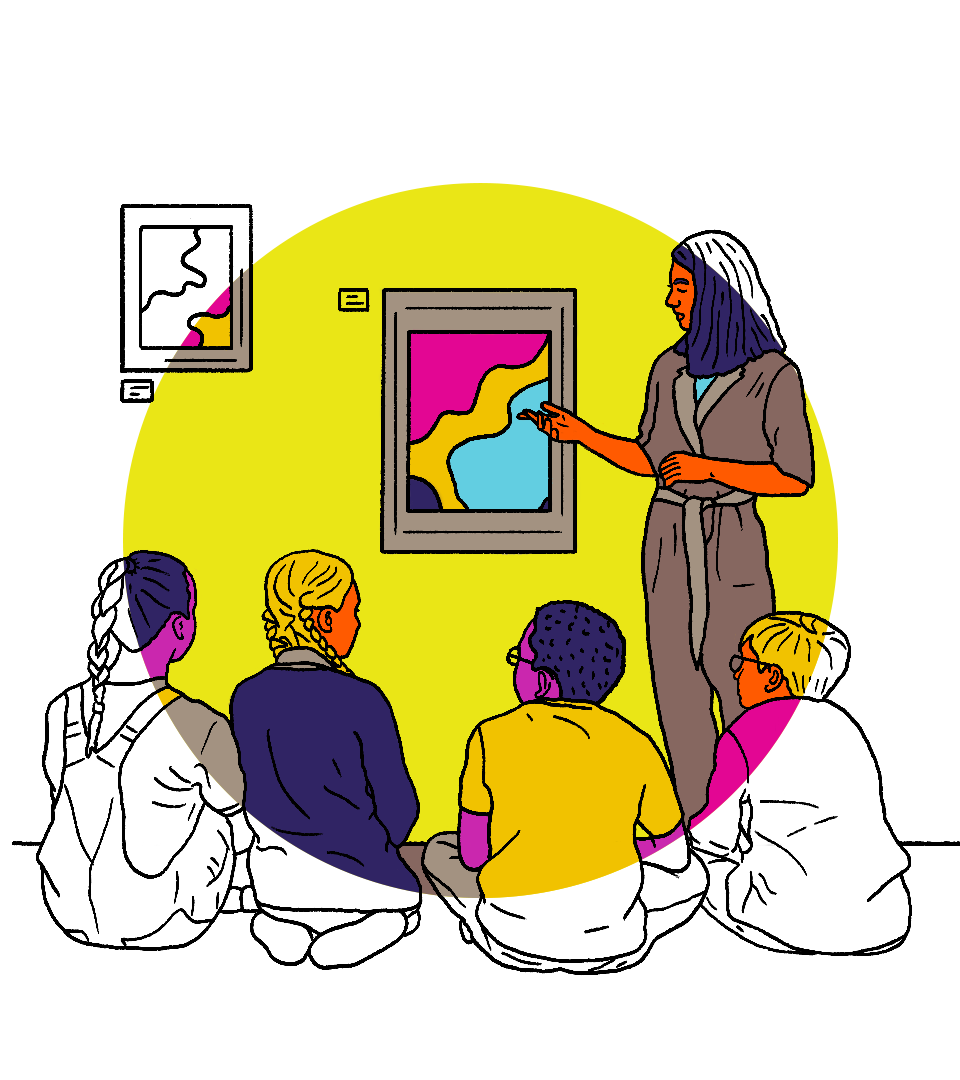A UK impact investment fund is supporting cultural organisations to measure and articulate their impact, putting them in a stronger position to make their case to funders, governments and society as a whole.
The social impact of cultural and creative organisations is often much deeper than it might appear on the outside, to audience members and patrons. A world class concert hall runs free, interactive music therapy groups for those living with dementia and their companions. A performing arts company focused on African and Caribbean dance also plays host to community groups, including a youth group, a yoga class and a dominoes club. A museum all about the history of migration offers a positive counter-narrative to critical media portrayals of refugees, asylum seekers and migrants in the present. For all these organisations, the contribution to society goes beyond culture: it’s about tangibly improving the lives of people in their communities.
Recognising the impact of arts and culture
So much of this work does not get the recognition it deserves, for several reasons. Partly, it’s about being careful with the messaging; as commercial organisations, there’s an imperative to market the core offer that sells tickets and gets people through the door, rather than focus on social programmes that often cater to a more vulnerable audience and are often resourced through other channels. But it’s also about the capacity to credibly and persuasively tell the impact story. Many cultural organisations, which are effectively social enterprises, lack impact management capability; that is, the time, skills and resources to robustly monitor, evaluate and articulate the positive outcomes they create. With better data and compelling stories about their objective social impact, in addition to the more subjective artistic impact, cultural organisations would be in a stronger position to make their case to funders, governments and wider society.
For impact investors such as the UK’s Arts & Culture Finance, which backs cultural social enterprises, better impact data enables us to either take greater financial risks or accept lower financial returns for higher social returns. For all these reasons, we decided to put the development of impact management capabilities at the forefront of our second fund, the Cultural Impact Development Fund (CIDF), which we launched in 2018.
Supported by Access – The Foundation for Social Investment and financed by its partners The National Lottery Community Fund and the UK’s wholesaler of impact investment funds, Big Society Capital, CIDF provided small scale (£25,000-£150,000) unsecured loan finance to cultural organisations with a clear social impact. It supported organisations like InHouse Records, a record label working in prisons to reduce recidivism, and Paintings in Hospitals, which is making art more accessible in health and care settings, not to mention the three companies described in the opening paragraph: Saffron Hall, IRIE! dance theatre and the Migration Museum, respectively.
How CIDF made a difference
How did CIDF make a difference to the impact management of its investees? First, the fund employed an impact manager who would ensure that all organisations had a documented theory of change and a framework for their monitoring & evaluation (M&E) practice, detailing the metrics to be collected, the frequency of collection and who would be responsible. The framework would be structured according to (typically) five evaluation questions aiming to get to the heart of what would be relevant for the organisation to monitor and evaluate, looking not only at the intended outcomes of a given intervention, but the mechanisms of change, too. For example, how effective was the work in reaching the target service users and how fully engaged were they? Without this basic level of engagement, more meaningful outcomes would be unlikely. The impact manager was the first port of call for tracking M&E progress across the CIDF portfolio and acted as a sounding board for management teams in relation to their practice.
Second, the impact manager worked with investees to set goals in relation to outputs (such as number of people supported, number of sessions delivered), outcomes (the difference made to, for example, wellbeing) and impact management (aspects of the M&E process itself). Each of these three areas was broken down into a handful of specific targets, which themselves would be evidenced by, ideally, more than one indicator. Having multiple, good-quality evidence indicators for a given target allows for a degree of triangulation, making any claims of progress more robust. While targets around outputs and outcomes would look for evidence that, respectively, the intervention was taking place at the proposed level of engagement and had the intended effects, targets around impact management detailed actions the investee could take to make their M&E practice more robust – for example, streamlining systems for data collection, providing M&E training to staff, or close integration of impact data into organisational business planning.
The fund made a small subset of targets with particularly robust indicators eligible for a potential reduction in the interest on the borrower’s loan, if achieved
Finally, the fund made a small subset of output, outcome and impact management targets with particularly robust indicators eligible for a potential reduction in the interest on the borrower’s loan, if achieved. If half the eligible targets were achieved in a given year, an interest rate discount of 0.2% would be applied to the rate going forward; if all of the eligible targets were achieved, the discount would be 0.45%. These reviews are undertaken annually, meaning that, over time, the cost of borrowing could be reduced significantly from the headline rate. CIDF’s intention was to incentivise the achievement of outcomes for the investee, whilst actualising the trade-off between financial and social returns for the fund.
A guiding principle in all this work is quality over quantity, depth rather than breadth. Instead of evaluating the impact of the organisation as a whole, CIDF’s target setting is focused on a smaller number of outputs and outcomes – ones that are core to the investee’s work and for which there are a handful of quality indicators. For impact targets that could reduce our financial return, this becomes even more critical, as we need to be confident any economic benefit to the borrower arises from verified impact success. This approach also has the practical benefit of focusing limited resources (both of the CIDF team and the borrower) to where most ground can be made.

Lessons so far
What have we learned from this process?
Organisations are well engaged with this approach, and the role of the impact manager has been key – but a bigger sample is needed. Organisations are generally very receptive to CIDF’s approach and want to improve their M&E practice. They have found working with the impact manager beneficial, helping them better articulate the impact of their work to their clients, audiences, staff and service users. The two people who’ve held this position between 2018 and 2022 became trusted, critical friends to borrowers, being their go-to experts on all M&E matters. While all impact investment professionals are likely to have some expertise in M&E, a dedicated manager and subject-matter expert ensures that this work never falls by the wayside and serves as an authoritative source of support for investees.
All that said, there are limitations to our sample: the portfolio is small (10 investments), and the borrowers tend to be small too – in terms of staff size and average annual turnover (less than £500,000). They are also self- selecting: as impact investment is a relatively new form of funding in arts & culture, CIDF’s applicants have tended to be forward-thinking and have had (at least) an awareness that impact assessment and reporting will form part of the relationship. The next step would be to test this approach with a broader and more diverse range of organisations; for example, those that are larger and more established. Can this approach be replicated, with the same level of enthusiasm? We need a bigger sample size to find out.
The approach works because it is proportionate and because of the nature of the investor-investee relationship. We believe the approach works because it meets organisations where they’re at and is specific and proportionate. It also refrains from being overly academic and is framed in a positive way, aiming to help organisations obtain better, more robust evidence that they can easily communicate. The M&E frameworks that are created as part of the process are centred around evaluation questions that are designed to be, first and foremost, useful to the organisation. At the same time, the impact manager works with organisations to build skills and confidence where necessary; it is a supportive and collaborative relationship.
The nature of the investor-investee relationship also lends itself to longer-term collaboration, compared with grant- funded projects. First, because the loan repayment period is typically longer (say, five years) than a grant funding cycle, there is more time in which to influence organisational change. Second, the implicit risk of defaulting on the loan for the borrower should reporting requirements not be met perhaps lends itself to a greater degree of accountability – though we have not had to test this so far.
Borrowers are achieving their interest rate incentive qualifying targets – but we can’t be sure that incentives are the cause of achievement. It is encouraging that portfolio organisations are on average exceeding or meeting the majority (74%) of their interest rate incentive qualifying targets. This is, however, still an emerging picture, with half of the portfolio (five organisations) still to report on their first year of investment and only a handful of organisations (three organisations) reporting on more than one year of investment to date. It is also important to note that investees have so far been better at achieving incentive qualifying targets relating to the outputs and outcomes of their work, rather than to impact management.
Based on initial, qualitative feedback from the portfolio, the quantum of incentive offered has not necessarily been a motivating factor for investees, but rather an added bonus in recognition of meeting their social impact targets. It’s possible that this is because the value of the financial incentive is not large enough to be motivating. However, another hypothesis is that, since the investees are social enterprises, their work and impact has intrinsic motivation, making any additional, financial incentive secondary. If this is true, then the quantum of discount offered may need to be significantly higher to be sufficiently motivating, compared with a scenario where no intrinsic motivation was at play. The fact that borrowers have been less able to meet their impact management targets only adds weight to this hypothesis, since the monitoring, evaluation and articulation of impact is distinct from its delivery and may therefore not carry the same intrinsic motivation. It is possible that economic incentives may be better targeted at areas where there is less intrinsic motivation. In any event, this approach would only benefit from more track record, as well as further investigation into the motivations underpinning different aspects of borrowers’ impact-related work.
Funders are uniquely positioned to drive forward impact management. Supporting organisations to improve their monitoring & evaluation capabilities is, unsurprisingly, a time- and labour-intensive process. But it is one that, in our experience, leads to a closer relationship with our investees and, ultimately, to better (more relevant and higher quality) data on what creative interventions work to make people’s lives better. For organisations, a firmer grasp on the data and the results is empowering, allowing for more informed decisions and clearer, more compelling communication with stakeholders such as funders. As this data flows upwards to funders and policymakers, they too can better articulate the impact of their capital and more strongly advocate for their sector in society at large. But in order to do so, funders must recognise the importance of upfront investment into monitoring & evaluation; as holders of capital, they can play a unique and leading role in fostering new, impact-first approaches, as with CIDF, as well as championing the value of evidence-based approaches to social change.








